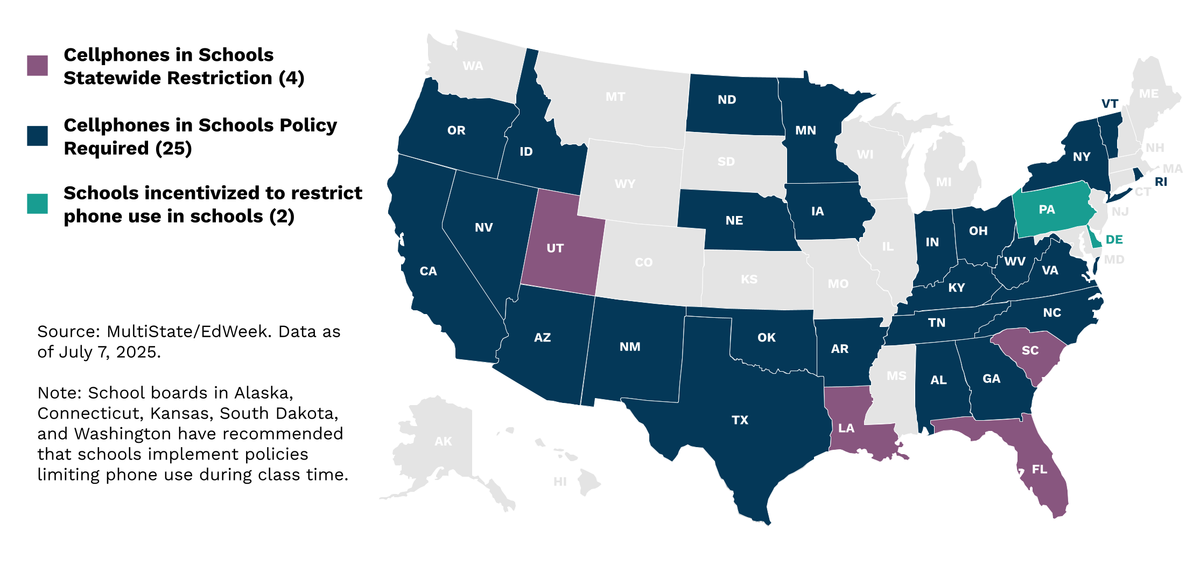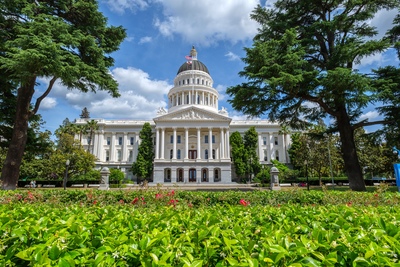
Technology & Privacy
How Trump's AI Executive Order Will Impact States
December 19, 2025 | Bill Kramer
July 11, 2025 | Bill Kramer

Key Takeaways:
Last week, Oregon Gov. Tina Kotek (D) signed an executive order requiring the state’s public school boards to develop a policy prohibiting cellphone use at schools. Gov. Kotek acted after legislation to limit device use at schools failed to pass as lawmakers adjourned for the year late last month. Oregon joins a growing list of states acting to restrict cellphone use in schools as policymakers are convinced by studies showing negative effects of device use during class time.
Florida was the first state to enact a full ban on cellphone use during instructional time in 2023. Louisiana and South Carolina followed with bans in 2024, and Utah implemented a ban this year.
Oregon joins 24 other states and D.C. mandating restrictions but leaving the districts in charge of how to implement the restrictions. Delaware and Pennsylvania decided to forgo a mandate and instead have created incentives for school districts to implement device restrictions individually, using extra funds as a carrot. And five additional states have recommended that school districts develop device restrictions, but it’s not a requirement. In total, 29 states and D.C. will mandate restrictions.

Instead of outright bans, most states have instructed individual school districts to develop their own policies to restrict device use in schools. The momentum on this issue has developed quickly. In only three years, over half the states have now enacted statewide policies to restrict device use in schools.
Creating mandates is one thing, but enforcement may prove a challenge that individual districts, schools, and classrooms will need to carry out. Some parents have pushed back hard on these policies. But these device restrictions are a rare bipartisan trend in the states in recent years, especially as lawmakers have stressed the effects on children when criticizing the technology industry.
This article appeared in our Morning MultiState newsletter on July 8, 2025. For more timely insights like this, be sure to sign up for our Morning MultiState weekly morning tipsheet. We created Morning MultiState with state government affairs professionals in mind — sign up to receive the latest from our experts in your inbox every Tuesday morning. Click here to sign up.

December 19, 2025 | Bill Kramer

November 4, 2025 | Morgan Scarboro

October 9, 2025 | Bill Kramer